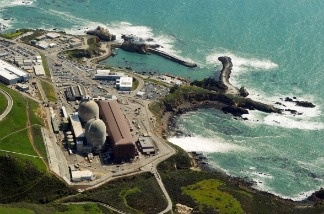
OROVILLE, CA - JULY 20: In this before-and-after composite image, (Top) The Enterprise Bridge passes over full water levels at a section of Lake Oroville on July 20, 2011 in Oroville, California (Bottom) The Enterprise Bridge passes over a section of Lake Oroville that is nearly dry on August 19, 2014 in Oroville, California. As the severe drought in California continues for a third straight year, water levels in the State's lakes and reservoirs is reaching historic lows. Lake Oroville is currently at 32 percent of its total 3,537,577 acre feet. ; Credit: Justin Sullivan/Getty Images
As the state endures one of the worst droughts in recorded history, Southern California residents are looking for answers about the sustainability of the region’s water supplies. Farmers have felt the sting of below-average rainfall for years, but as the crisis worsens, urban and suburban areas are likely to suffer drastic change in their relationship with the vital liquid.
Wildfires and brown lawns may be increasingly common visual symptoms of drought, but unless the rains return to the Golden State (and stay awhile), Southern Californians can also expect to see food and water prices rise, battles over water rights intensify, and, likely, water use increasingly restricted. Will the drought bring about a new discussion of revising the current water pricing structure to reduce high consumption in residential areas? Gov. Jerry Brown has declared a state of emergency and requested a 20 percent reduction in use, but some cities have gone even further. Sacramento and other cities have begun levying substantial fines on residents who violate new statutes dictating when lawns may be watered.
At this Milken Institute Forum, co-hosted with KPCC – Southern California Public Radio, representatives from utilities, advocacy groups, and businesses will discuss the drought’s impact on towns and cities in the region. Beyond examining the scope of the problem, these experts will debate the best municipal and statewide strategies to ensure our continued access to H2O.
Guests:
Patrick Cavanaugh, broadcaster with the California Ag Today Radio Network; managing editor of American Vineyard and California Dairy; editor of Vegetables West and Pacific Nut Producer magazines
Sanjay Gaur, Senior Manager, Raftelis Financial Consultants, a utility consulting firm.
Jeffrey Kightlinger, General Manager, The Metropolitan Water District of Southern California.
Jim McDaniel, Senior Assistant General Manager for the Los Angeles Department of Water and Power's (LADWP) Water System.
Kate Poole, Senior Attorney and Litigation Director for the Water Program, Natural Resources Defense Council.



























